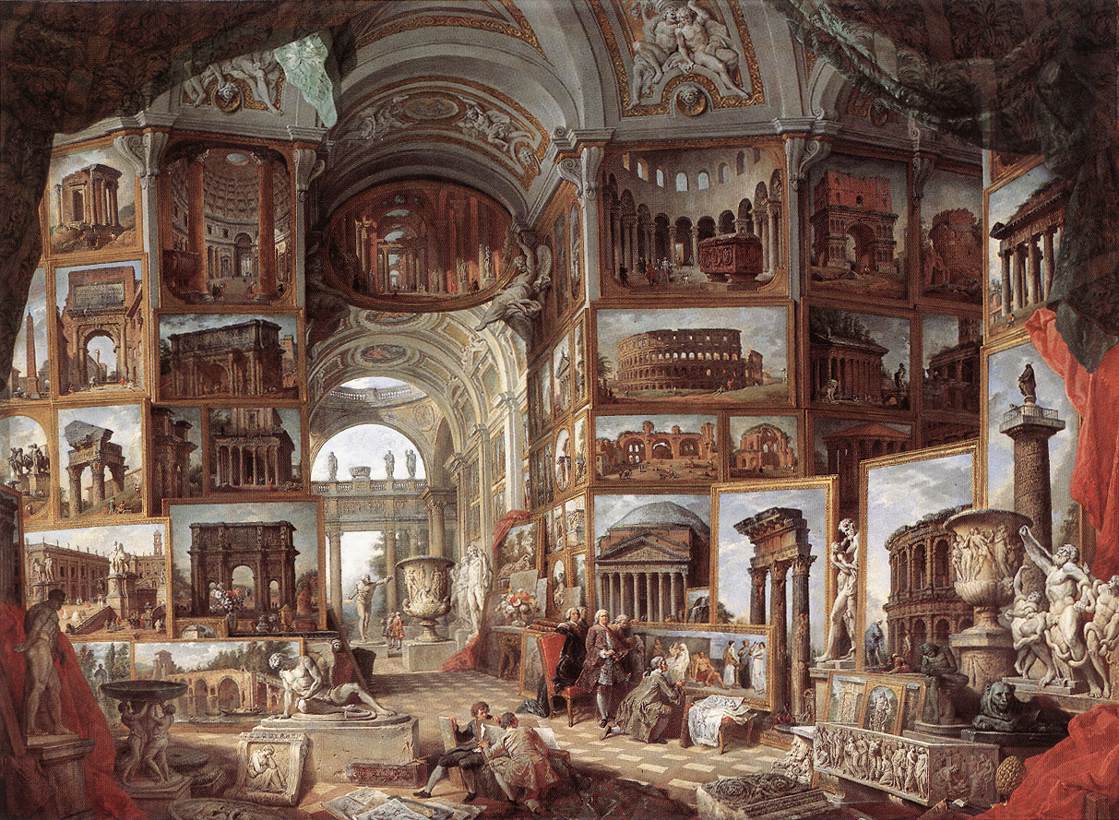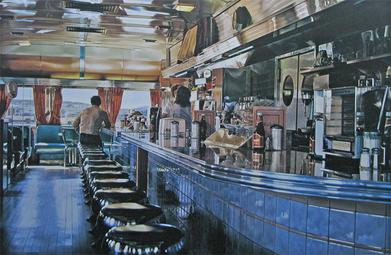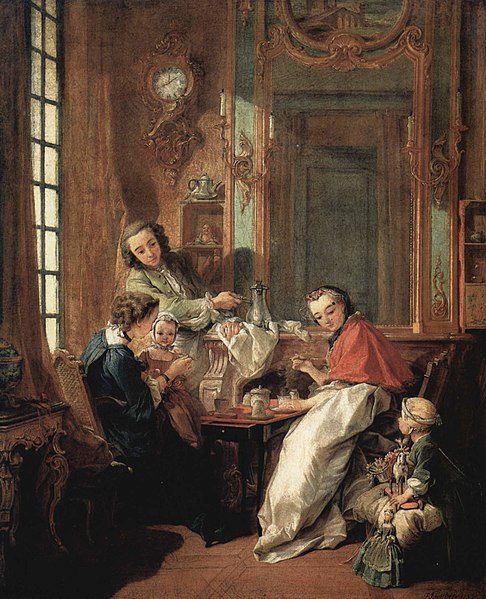Tuesday, September 23, 2008
EXPRESSIONISM

Expressionism is the tendency of an artist to distort reality for an emotional effect; it is a subjective art form. Expressionism is exhibiteinmany art forms, including painting, literature, .The term often implies emotional angst. In a general sense, painters such as Matthias Grünewald and El Greco can be called expressionist, though in practice, the term is applied mainly to 20th century works.
Posted by Milind Pandharkame at 9:31 AM 1 comments
FAUVISM

Les Fauves (French for The Wild Beasts) were a short-lived and loose grouping of early 20th century Modern artists whose works emphasizedpainterly qualities and strong colour over the representational values retained by Impressionism. While Fauvism as a style began around 1900 and continued beyond 1910, the movement as such lasted only three years, 1905–1907, and had three exhibitions.The leaders of the movement were Henri Matisse and André Derain.
Posted by Milind Pandharkame at 9:29 AM 1 comments
GRAFFITI
Graffiti (singular: graffito; the plural is used as a mass noun) is the name for images or lettering scratched, scrawled, painted or marked in any manner on property. Graffiti is sometimes regarded as a form of art and other times regarded as unsightly damage or unwanted. Some people think of it as art, others vandalism, and others, a culture of its own. Graffiti has existed since ancient times, with examples going back to Ancient Greece and the Roman Empire.[1]Graffiti can be anything from simple scratch marks to elaborate wall paintings. In modern times, spray paint andmarkers have become the most commonly used materials. In most countries, defacing property with graffiti without the property owner's consent is considered vandalism, which is punishable by law. Sometimes graffiti is employed to communicate social and political messages. To some, it is an art form worthy of display in galleries and exhibitions, to others it is merely vandalism. There are many different types and styles of graffiti and it is a rapidly evolving artform whose value is highly contested, being reviled by many authorities while also subject to protection, sometimes within the same jurisdiction.
Posted by Milind Pandharkame at 9:27 AM 0 comments
NEOCLASSICISM

Neoclassicism (sometimes rendered as Neo-Classicism or Neo-classicism) is the name given to quite distinctmovements in the decorative and visual arts, literature, theatre, music, and architecture that draw upon Western classical art and culture (usually that of Ancient Greece or Ancient Rome). These movements were dominant during the mid 18th to the end of the 19th century. This article addresses what these "neoclassicisms" have in common.
Posted by Milind Pandharkame at 9:24 AM 0 comments
PHOTOREALISM

Photorealism is the genre of painting based on making a painting of a photograph. The term is primarily applied to paintings from theUnited States photorealism art movement that began in the late 1960s, early 1970s. More recently, a splinter art movement calledhyperrealism has developed.
Posted by Milind Pandharkame at 9:21 AM 0 comments
PIN STRIPING
Pinstriping (pinstriping) is the application of a very thin line of paint or other material called a pin stripe, and is generally used for decoration. Freehand pin stripers uses a specialty brush know as a pinstriping brush. Fine lines in textiles are also called pin stripes. Automotive, bike shops, and do-it-yourself car and motorcycle mechanics use paint pin striping to create their own custom look on the automotive bodies and parts.
Posted by Milind Pandharkame at 9:19 AM 0 comments
PERSIAN MINIATURE

A Persian miniature is a small painting, whether a book illustration or a separate work of art intended to be kept in an album of such works. The techniques are broadly comparable to the Western and Byzantine traditions of miniatures in illuminated manuscripts, which probably had an influence on the origins of the Persian tradition. Although there is an equally well-established Persian tradition of wall-painting, the survival rate and state of preservation of miniatures is better, and miniatures are much the best-known form of Persian painting in the West. Miniature painting became a significant Persian form in the 13th century, and the highest point in the tradition was reached in the 15th and 16th centuries. The tradition continued, under some Western influence, after this, and has many modern exponents. The Persian miniature was the dominant influence on other Islamic miniature traditions, principally the Ottoman miniature in Turkey, and the Mughal miniature in the Indian sub-continent.
Posted by Milind Pandharkame at 9:17 AM 0 comments
POINTILLISM
Pointillism is a style of painting in which small distinct points of primary colors create the impression of a wide selection of secondary and intermediate colors. The technique relies on the perceptive ability of the eye and mind of the viewer to mix the color spots into a fuller range of tones and is related closely to Divisionism, a more technical variant of the method. It is a style with few serious practitioners and is notably seen in the works ofSeurat, Signac and Cross. The term Pointillism was first coined by art critics in the late 1880s to ridicule the works of these artists and is now used without its earlier mocking connotation. The practice of Pointillism is in sharp contrast to the more common methods of blending pigments on a palette or using the many commercially available premixed colors. Pointillism is analogous to the four-color CMYK printing process used by some color printers and large presses, and to a lesser degree to computer monitors and television sets which use tiny dots of primary red, green, and blue to render color.
Posted by Milind Pandharkame at 9:14 AM 0 comments
PRIMITIVE
Primitive art is characterized by a childlike simplicity. (See also outsider art, to which it bears many similarities.) It is a gross oversimplification to assume that Naïve art is created by people with little or no formal art training. The term naïve art presumes the existence (by contrast) of an academy and of a generally accepted educated manner of art creation, most often painting. In practice, however, there are schools of naïve artists. Over time it has become an acceptable style. The characteristics of naïve art are an awkward relationship to the formal qualities of painting. Difficulties with drawing and perspective that result in a charmingly awkward and often refreshing vision, strong use of pattern, unrefined color, and simplicity rather than subtlety are all supposed markers of naïve art. It has, however, become such a popular and recognizable style that many examples could be called pseudo-naïve. Whereas naïve art ideally describes the work of an artist who did not receive a formal education in an art school or academy, for example Henri Rousseau or Alfred Wallis, 'pseudo naïve' or 'faux naïve' art describes the work of an artist working in a more imitative or self-conscious mode and whose work can be seen as more imitative than original. Primitive art is another term often applied to the art of those without formal training. This is distinguished from the self-conscious movement primitivism. Another term related to (but not completely synonymous with) naïve art is folk art.
Posted by Milind Pandharkame at 9:12 AM 0 comments
REGIONALISM

Regionalism is a realist modern American art movement that was popular during the 1930s. The artistic focus was from artists who shunned the city life and rapidly developing technological advances to create scenes of rural life. Regionalist style was at its height from 1930 to 1935, and is best-known through the so-called "Regionalist Triumvirate" of Grant Wood in Iowa, Thomas Hart Benton in Missouri, and John Steuart Curry inKansas. During the Great Depression of the 1930s, Regionalist art was widely appreciated for its reassuring images of the American heartland.
Posted by Milind Pandharkame at 9:10 AM 0 comments
ROCOCO

Rococo is a style of 18th century French art and interior design. Rococo rooms were designed as total works of art with elegant and ornate furniture, small sculptures, ornamental mirrors, and tapestry complementing architecture, reliefs, and wall paintings. It was largely supplanted by the Neoclassic style.
Posted by Milind Pandharkame at 9:07 AM 0 comments
ROMANTICISM
Romanticism is a complex artistic, literary, and intellectual movement that originated in the second half of the 18th century in Western Europe, and gained strength during the Industrial Revolution.[1] It was partly a revolt against aristocratic social and political norms of the Age of Enlightenment and a reaction against the scientific rationalization of nature, and was embodied most strongly in the visual arts, music, and literature. The movement stressed strong emotion as a source of aesthetic experience, placing new emphasis on such emotions astrepidation, horror and awe—especially that which is experienced in confronting the sublimity of untamed nature and itspicturesque qualities, both new aesthetic categories. It elevated folk art and custom to something noble, and argued for a "natural" epistemology of human activities as conditioned by nature in the form of language, custom and usage. Our modern sense of a romantic character is sometimes based on Byronic or Romantic ideals. Romanticism reached beyond the rational and Classicist ideal models to elevate medievalism and elements of art and narrative perceived to be authentically medieval, in an attempt to escape the confines of population growth, urban sprawl and industrialism, and it also attempted to embrace the exotic, unfamiliar and distant in modes more authentic than chinoiserie, harnessing the power of the imagination to envision and to escape.
Posted by Milind Pandharkame at 9:02 AM 0 comments
SOCIALIST REALISM

Socialist realism is a teleologically-oriented style of realistic art which has as its purpose the furtherance of the goals ofsocialism and communism. Although related, it should not be confused with social realism, a type of art that realistically depicts subjects of social concern.
Posted by Milind Pandharkame at 8:59 AM 0 comments
SURREALISM
Surrealism is a cultural movement that began in the early-1920s, and is best known for the visual artworks and writings of the group members. Surrealist works feature the element of surprise, unexpected juxtapositions and non sequitur; however many Surrealist artists and writers regard their work as an expression of the philosophical movement first and foremost, with the works being an artifact. LeaderAndré Breton was explicit in his assertion that Surrealism was above all a revolutionary movement. Surrealism developed out of the Dada activities of World War I and the most important center of the movement was Paris. From the 1920s on, the movement spread around the globe, eventually affecting the visual arts, literature, film, and music, of many countries and languages, as well as political thought and practice, and philosophy and social theory.
Posted by Milind Pandharkame at 8:57 AM 0 comments
TACHISME
Tachisme (alternative spelling: Tachism, derived from the French word tache - stain) was a French style of abstract painting in the 1940s and 1950s. It is often considered to be the European equivalent to abstract expressionism. Other names for this movement are L'Art Informel[1](similar to action painting) and abstraction lyrique (related to American Lyrical Abstraction). The Cobra group artists are also related to Tachisme, as is Japan's Gutai group. After the World War II the term School of Paris often referred to Tachisme, the European equivalent of American Abstract expressionism. Important proponents being Jean Dubuffet, Pierre Soulages, Nicholas de Stael, Hans Hartung, Serge Poliakoff, and Georges Mathieu, among several others. See list of artists below. According to Chilvers (see references below), the term tachisme "was first used in this sense in about 1951 (the French critics Charles Estienneand Pierre Guéguen have each been credited with coining it) and it was given wide currency by [French critic and painter] Michel Tapié in his bookUn Art autre (1952)." Tachisme was a reaction to cubism and is characterized by spontaneous brushwork, drips and blobs of paint straight from the tube, and sometimes scribbling reminiscent of calligraphy.
Posted by Milind Pandharkame at 8:55 AM 0 comments
TONALISM
Tonalism (about 1880 to 1915) is an artistic style that emerged in the 1880s when American artists began to paint landscape forms with an overall tone of colored atmosphere or mist. Dark, neutral hues, such as gray, brown or blue, would usually dominate such compositions. During the late 1890s American art critics began to use the term "tonal" to describe these works. Two of the leading painters associated with this style are George Inness and James McNeill Whistler. Tonalism is also sometimes used to describe American landscapes derived from the French Barbizon style,[1] which employs an emphasis on mood and shadow.[2] Tonalism, in both its forms, was eclipsed by the popularity of Impressionism and European modernism
Posted by Milind Pandharkame at 8:04 AM 0 comments